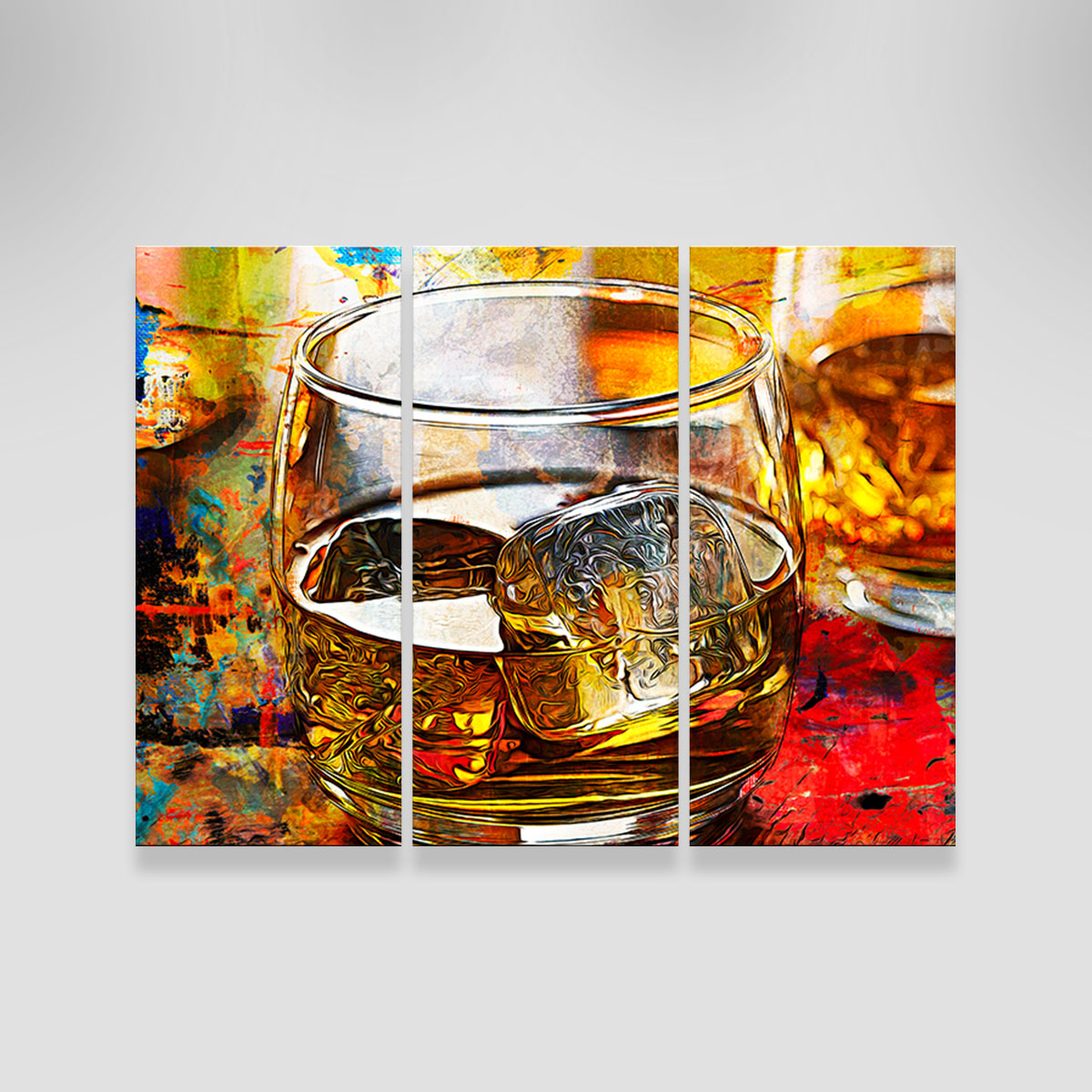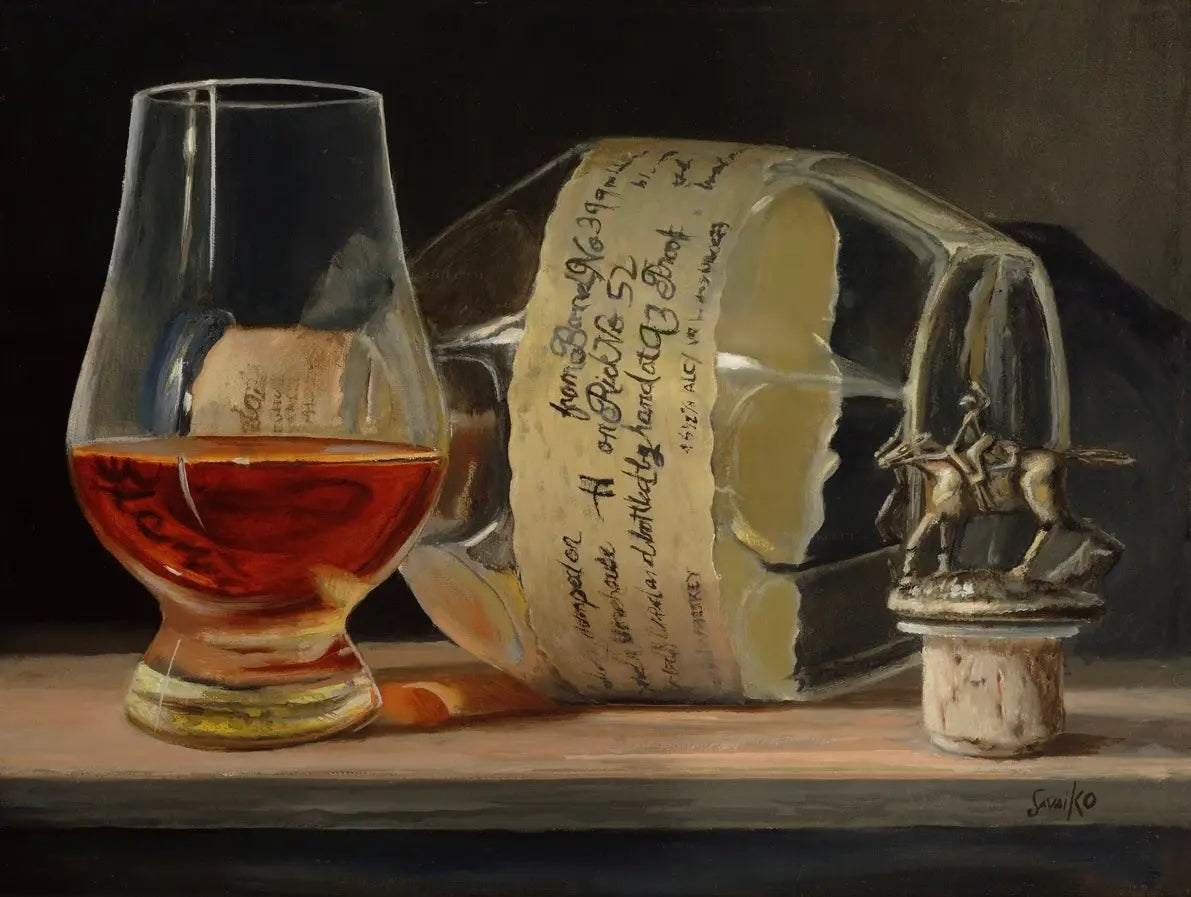Limited Edition Bourbon Art: Why Collectors Are Flocking to Unique Finds
Limited Edition Bourbon Art: Why Collectors Are Flocking to Unique Finds
Blog Article
The Relevance of Whiskey Art in Celebrating Heritage and Craftsmanship in the Beverage Industry
The complex connection in between scotch art and the celebration of heritage and workmanship within the beverage industry can not be overemphasized. Through attentively developed bottles and tags, whiskey brand names encapsulate their historic roots and the artisanal abilities that define their manufacturing techniques.
The Historic Roots of Whiskey
At the heart of scotch's attraction exists an abundant tapestry of historical origins that trace back to old worlds. The beginnings of whiskey can be connected to the distillation methods of the Sumerians and Babylonians around 2000 BCE, where very early types of fermented grain drinks began to emerge. Nonetheless, it was in the Center Ages that the art of distillation progressed significantly, especially in Ireland and Scotland, bring about the development of bourbon as we understand it today.
The term "scotch" itself acquires from the Gaelic word "uisce beatha," indicating "water of life." This phrase highlights the social significance of scotch in Celtic cultures, where it was often connected with routines, parties, and communal bonding. By the 15th century, distillation ended up being an identified craft within reclusive communities, paving the method for the establishment of lawful distilleries.
As profession courses increased, whiskey's popularity grew, transcending regional limits and catching the passion of aficionados worldwide. Bourbon Art. This historical journey reflects not only the craftsmanship behind whiskey production but also its essential function in social and social contexts, marking it as a considerable beverage throughout history
Artistic Expression in Branding
Scotch branding stands as a compelling crossway of creativity and commerce, where visual identity plays an essential role fit consumer assumption. The visual appeals of whiskey labels, product packaging, and advertising and marketing products mirror not just the brand's story yet additionally its core worths and heritage. With creative expression, distilleries convey a narrative that reverberates with customers, evoking emotions and triggering links.
Making use of shade, typography, and imagery in branding offers to separate products in a saturated market. As an example, standard motifs might evoke a feeling of authenticity and workmanship, while contemporary designs can indicate development and forward-thinking. This critical creative instructions improves brand name recognition and commitment, allowing customers to build a personal connection with the bourbon they select.
In addition, creative expression in branding usually serves as a party of local heritage. Distilleries often include local signs or historic references into their layouts, creating a sense of area that invites consumers to take part in a broader cultural experience. Eventually, the virtuosity behind whiskey branding not only improves aesthetic allure but likewise improves the total narrative of the brand, promoting a much deeper admiration for the craftsmanship and heritage embedded in each bottle.
Workmanship in Container Layout
The artistry apparent in scotch branding expands past aesthetic identification to encompass the craftsmanship associated with bottle style. Each container acts as a vessel not simply for the spirit within, however also for the tale it outlines its beginning, quality, and custom. The style procedure needs careful interest to detail, as aspects such as product, form, and closure add substantially to the general perception of the whiskey.
Workmanship in container style includes selecting premium glass that can improve the whiskey's shade and quality, while likewise offering a tactile experience for the customer. The shape of the bottle must be both functional and cosmetically attractive, usually showing the heritage of the brand. Many distilleries choose special shapes or printed logos that evoke a feeling of authenticity and background.
Additionally, the label layout and typography Bourbon Art play a vital function in communicating the brand name's narrative. Realism Art. A well-crafted bottle not just mesmerizes the consumer's eye however also enhances the brand's dedication to quality and practice. In this method, the workmanship of bottle layout ends up being a vital element of the whiskey experience, combining artistry with a profound regard for heritage
Cultural Value of Whiskey Art
Commemorating tradition and workmanship, the social importance of bourbon art transcends simple visual appeals, linking with the historic and social stories of the regions from which it stems. Each bottle acts as a canvas, showing the distinct tales, mythology, and traditions that have actually formed local whiskey-making methods. The detailed designs typically mirror the heritage of the distillers, incorporating signs and themes that reverberate with the culture and values of their neighborhoods.

In enhancement, whiskey art plays an essential duty in public celebrations and parties, acting as a tangible web link between individuals and their shared experiences. By valuing the creativity in bourbon packaging, customers grow a deeper understanding and respect for the craft, inevitably enriching their satisfaction of the beverage itself.
Modern Trends in Scotch Discussion
Over the last few years, the presentation of bourbon has progressed to mirror contemporary tastes and fads while still honoring conventional workmanship - Bourbon Art. Distilleries are progressively concentrating on visual elements that improve the total alcohol consumption experience, bridging the space in between heritage and modernity
Cutting-edge bottle designs have arised, often incorporating sustainable products and imaginative tags that inform compelling stories. Numerous brand names currently team up with neighborhood artists, infusing their products with distinct visual expressions that resonate with consumers. Furthermore, limited-edition launches are usually packaged in collectible containers, including worth and appeal for connoisseurs.

Final Thought
In conclusion, scotch art works as a vital channel for sharing the heritage and workmanship fundamental in the beverage sector. Via elaborate branding, cutting-edge bottle layouts, and culturally significant artistic aspects, bourbon brand names effectively honor their customs click to read more and link with customers. This imaginative story not just elevates the gratitude of scotch however likewise strengthens area identification and satisfaction amongst manufacturers. Inevitably, whiskey art plays an important role in preserving and celebrating the rich cultural tapestry of whiskey-making.


Workmanship in bottle design involves picking high-quality glass that can boost the bourbon's color and clarity, while additionally offering a responsive experience for the customer. In this way, the craftsmanship of bottle design comes to be an important facet of the whiskey experience, combining creativity with a profound respect for heritage.
In verdict, scotch art serves as an essential avenue for revealing the heritage and craftsmanship integral in the beverage industry.
Report this page